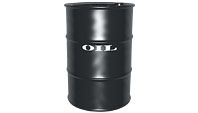
1. Born in London in 1969, Steve McQueen studies fine art at Goldsmiths College in London, then attends NYU’s Tisch film program in 1993 for one year. “I’d gone there because Spike Lee, Jim Jarmusch, and Scorsese were there, but in fact it was just full of rich kids.”

2. In 1993, McQueen also breaks out with the video piece Bear, a silent, black-and-white film of two naked men wrestling (one is McQueen) for no apparent reason. The effect is alternately playful, vicious, and erotic.

3. In Deadpan (1997), another silent black-and-white film, he stages a famous Buster Keaton stunt from Steamboat Bill, Jr. The mash-up of performance art, Warhol stunt-film influences, and silent slapstick makes him an art-world star.

4. With 1998’s 22-minute Drumroll, he begins using sound, outfitting a large oil drum with three cameras and rolling it down the streets of New York. The resulting installation— a triptych of massive projections—wins the 1999 Turner Prize.

5. McQueen’s documentaries (including 2001’s 7th Nov., a monologue about a man who killed his brother) lead to Britain’s Imperial War Museum naming him their “Official War Artist to Iraq” in 2003. He produces “Queen and Country,” a series of stamps honoring fallen soldiers. The Royal Mail refuses to make them official stamps.

6. His feature debut, Hunger, a harrowing film about IRA hunger-striker Bobby Sands, is partially inspired by an interview with Jean-Luc Godard, who said protesters like Sands were “important because they’re childish.” It wins the Camera d’Or for first-time filmmakers at the 2008 Cannes Film Festival. That same year, he cameos in pal Yohji Yamamoto’s Spring 2009 fashion show.

7. Hunger opens here Friday, which is timely: This month, two British soldiers were killed by members of the “Real IRA” in Northern Ireland, the first British fatalities in the conflict in more than eleven years. In June, McQueen will represent Britain at the 2009 Venice Biennale.